What Is Shopify ERP? 11+ Best ERP Integrations with Shopify
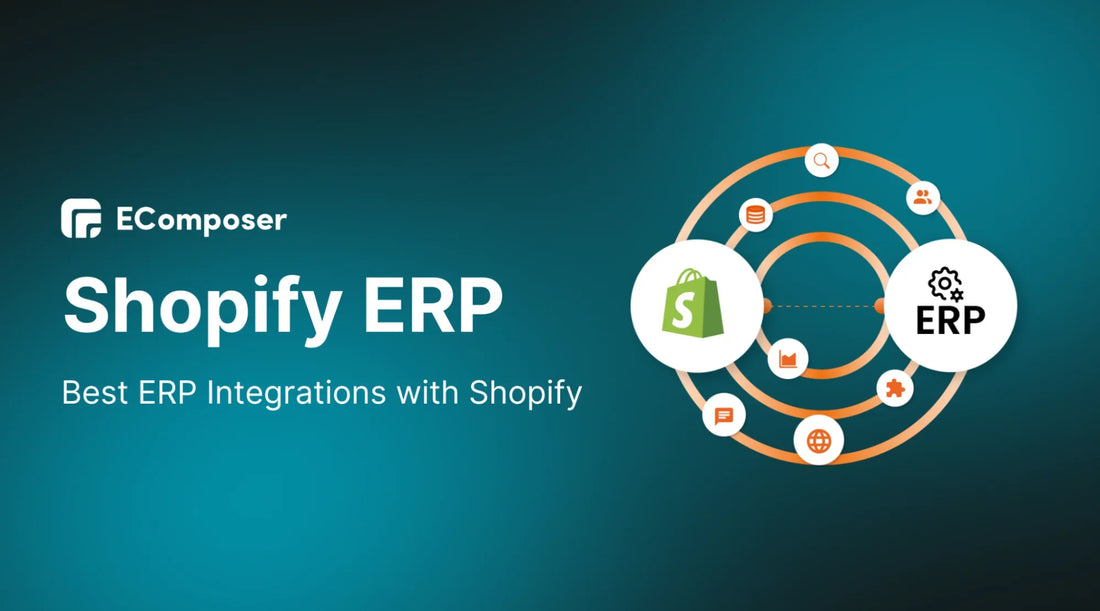
Table Of Contents
Running a Shopify store brings excitement at first, but adding new challenges emerges when businesses grow due to the need for inventory tracking and order management and financial reporting, and customer data handling. ERP integration provides a solution to these business challenges. All business procedures within a Shopify ERP system operate from a single platform where real-time data stays synchronized and manual work disappears. What approach should you use to select one ERP solution from all those many possibilities?
In this guide, we’ll break down what Shopify ERP is, why it matters, and the 11+ best ERP integrations to help you automate and scale your business effectively. Let’s dive in!
What is Shopify ERP? How does it work?
Shopify ERP refers to the way Shopify connects with Enterprise Resource Planning systems to build unified business management platforms, although some people believe it represents an independent Shopify product.
ERP systems function as powerful software that enables businesses to automate multiple business functions across inventory management and accounting, together with order processes and customer relationship management, and supply chain control points into a single unified system. While Shopify is primarily an eCommerce platform, it can function as part of an ERP setup through third-party integrations or Shopify Plus, the enterprise-tier version with advanced automation and API capabilities.
For small businesses, Shopify’s built-in tools might be enough to handle basic ERP-like tasks, such as tracking inventory and processing payments. However, for larger or fast-growing businesses, connecting Shopify to an ERP solution like NetSuite, SAP, or Odoo ensures smooth operations across multiple departments.
How does Shopify ERP work?
The integration between Shopify and ERP systems results in directional data exchange between online retail management solutions through the combination of eCommerce and inventory functions with finance and fulfillment capabilities.
Centralized E-Commerce Hub: Your business depends on Shopify as its front-end system because it operates your online store while processing orders and payments, and generates essential business data.
Inventory & Order Management: Through Shopify, real-time inventory tracking occurs across all selling platforms, which include retail stores alongside web stores and online marketplaces. The connection between ERP and online inventory systems enables automatic updates for warehouse management in addition to supplier coordination and inventory tracking.
ERP Integrations for Automation: Businesses can link Shopify to advanced ERP tools either through the Shopify App Store or custom API connections.
- QuickBooks, Xero, or NetSuite to automate bookkeeping.
- ShipStation or Cin7 to manage logistics and shipping.
- Salesforce or HubSpot to tie customer data into marketing and sales strategies.
Automated Data Flow: When a customer places an order on Shopify, the order details, payment status, and customer information flow directly to the ERP system. The ERP then:
- Updates inventory across all sales channels.
- Triggers fulfillment and shipping processes.
- Logs the transaction for accounting and financial reports—all without manual data entry.
Scalability with Shopify Plus: For larger businesses, Shopify Plus enhances ERP capabilities with features like:
- Shopify Flow for automation.
- Multi-store management for global businesses.
- Advanced API integrations to build custom workflows.
Why Integrate ERP with Shopify?

1. Improved Inventory Management
- The system performs live synchronization between Shopify and the ERP to maintain consistent inventory levels thus avoiding product overselling along with inventory depletion.
- ERP integration with Shopify generates exact visibility of stock numbers alongside their locations and movement data.
- Automatic records management in the software produces both time and error reduction through eliminating manual record updates.
2. Streamlined Order Processing
- During operation, Shopify uses automated order transfer to move sales orders seamlessly from its platform to the ERP system for fulfillment.
- Order fulfillment speeds up through this system because it decreases the time needed for processing, thus leading to faster distributions.
- The use of such a system helps prevent human errors by eliminating manual order entry procedures, which leads to more accurate and efficient operations.
3. Enhanced Customer Service
- The system delivers precise order information for customers by showing current shipment updates.
- ERP integration with Shopify enables staff from customer service and fulfillment teams to exchange information without interruptions.
- Customer questions and issues can be addressed more rapidly through combined ERP-Shopify integration.
4. Accurate Financial Reporting
- The system enables automatic data transfer of sales information along with invoices and payments that directly enter the ERP system.
- Business leaders can make decisions through better data insights because ERP systems, together with Shopify, produce current financial reports.
- ERP integration with Shopify allows businesses to simplify their accounting system by minimizing staff time spent on manual data entry operations.
5. Increased Operational Efficiency
- The automation of processes enables staff members to spend more time on other activities because manual operations become automated.
- A unified data management system is developed through ERP integration with Shopify.
- Data accuracy improves when integrating ERP with Shopify because it establishes consistent information throughout all departments.
6. Scalability and Business Growth
- The system enables organizations to process orders at higher numbers without requiring additional staff involvement.
- Through its use, organizations can expand their markets and sales channels for business growth.
- The integration between ERP-based systems and Shopify improves managerial control in both operational and financial areas.
7. Enhanced Data Analysis and Reporting
- The integration of ERP with Shopify allows businesses to combine data across different domains for advanced information assessment.
- ERP integration with Shopify can create comprehensive reports that supply critical business understanding to operators.
- The combination of ERP with Shopify creates better forecasting abilities which improve inventory planning.
5 Kinds of Best Shopify ERP Integrations
The selection of an appropriate ERP integration system for your Shopify store depends on specific business requirements together with available IT system capabilities. The following five vital ERP integration types combined will transform your Shopify operational performance.
1. Ecommerce ERP Integration
The connection of your Shopify store to a cloud-based ERP system using Ecommerce integration functionality leads to operational enhancements, together with system functionality improvement. The integration allows critical data points such as customer information alongside orders and shipping information, tax data, and help desk tickets to move without interruption between different office units.
- The system maintains time-sensitive inventory information synchronization between front-end and back-end operations.
- The organization maintains precise data regarding its customers and sales operations among all workgroups.s
- An automated financial audit system decreases errors in accounting processes.
- Companies should apply customized pricing mechanisms that target different customer groups.s
Methods for Ecommerce ERP Integration:
- Shopify provides an API for users who need complete customization but require technical expertise to utilize it effectively.
- The option includes third-party out-of-the-box products that allow for customized features.
- Organizations should select an ERP system that features a native integration with Shopify (such as Shopify-NetSuite) to achieve the best possible flexibility.
The connection between ERP systems and supply chain management and warehouse management, and product lifecycle management software brings operational efficiency benefits for ecommerce brands.
2. Customer Relationship Management (CRM) ERP Integration
Customer Relationship Management systems process and interpret customer operational data to enable businesses to refine their entire marketing and sales operations alongside customer service functions. The merger of CRM with ERP systems creates an extensive customer data environment for businesses.
The collaborative system between Salesforce and NetSuite ERP allows businesses to observe their customers from all angles. The combined system enables all revenue-producing and customer support staff to access the same information needed to deliver custom-tailored interactions.
- Centralized customer data for better decision-making
- Streamlined sales and marketing efforts
- Improved customer service with real-time access to support history
3. Business Intelligence (BI) ERP Integration
Organizations support data-driven decisions through Business Intelligence (BI) tools that evaluate and present information to users. Some Enterprise Resource Planning (ERP) systems contain pre-installed Business Intelligence features that sometimes yield limited analysis results so businesses should analyze external BI analytics tools for enhancing their analytical capabilities.
- Real-time data visualization for quick decision-making
- Advanced reporting capabilities
- Enhanced visibility into sales trends, inventory levels, and customer behavior
4. Human Resources (HR) ERP Integration
Headquarters that uses HR ERP as an integrated platform to manage payroll in addition to recruitment processes and employee evaluations, and compliance duties for effective streamlining.
- Secure storage and management of employee data
- Automated payroll and compensation management
- Improved time and attendance tracking
- Employee training and development tools
5. Project Management ERP Integration
Project management tools help teams check their progress, together with how resources are allocated to meet their time goals. Numerous ERP systems come with project management features, but organizations often prefer external tools that integrate with their ERP platform.
- Clear visibility into project costs and timelines
- Real-time status updates and process tracking
- Seamless collaboration between HR, payroll, and operations teams
- Improved accountability and workflow efficiency
What To Look For In Shopify ERP Integrations
Seamless Integration with Shopify
Before acquiring an ERP system any organization must establish the absolute requirements their business requires. The initial step requires problem identification through workflow evaluation before you define essential requirements for core integrated solution functions. The ERP system selection process requires focus on inventory management alongside order processing and financial tracking, and CRM functionalities.
Flexibility and Scalability
Your ERP must show both adaptation capabilities and potential expansion with business growth. Look for an ERP system that enables easy integration of expanded sales channels and business models, such as direct-to-consumer operations, without demanding complex modification. You should verify that the provider provides both accessible and quick customer service support.
Advanced Inventory and Fulfillment Management
An effective ERP solution needs to manage complex fulfillment operations together with multilocation inventory tracking capabilities, which include dropshipping and partial fulfillment features. A strong inventory system within multiple warehouses operating globally enables business operations to function efficiently while maintaining accurate ordering.
Automation of E-commerce Processes
A core business management system that operates at full automation helps organizations run more smoothly and decreases errors by human operators. To improve operational efficiency, an ERP system must supply automated tools that implement streamlined task processing methods.
Transparent Pricing
ERP pricing can include hidden costs that may not be apparent at first glance. Evaluate the total cost of ownership by considering expenses such as:
- Software licensing fees
- Network hardware requirements
- Customer support and service fees
- Data migration costs
- Additional server needs
- Customizations and add-ons
- Testing and implementation
- Employee training
User-Friendly Interface
Organizations should design ERP systems that allow employees to use the platform without struggle. Shopify merchants need to choose a configurable system through which their employees can easily use it without coding requirements, thus lowering costs and improving adoption flow.
How To Implement ERP Shopify Integration

An ERP system implemented with Shopify creates strategic business operation control through enhanced efficiency and accurate management throughout every department. Executed properly, an ERP system integration succeeds but needs thorough planning. The path to implement successfully includes these fundamental procedures:
Step 1. Identify Business Requirements
The first step for everyone in need of an ERP system is to ascertain what fundamental needs their company has. You must assess your current process for identifying issues and then defining the requirements for the essential integrated solution features.
The ERP system selection process must incorporate inventory management services, together with order processing features and financial monitoring functions, and customer relationship management (CRM).
Step 2. Select the Right ERP System
The selection of an ERP system depends on your business requirements, which you should establish before making the decision. Shopify gives businesses the ability to implement the connection of their ERP solutions with SAP Business One, Oracle NetSuite, and Microsoft Dynamics 365. Select an ERP system that fulfills your business requirements and provides adequate functionality and adaptability, together with smooth system interoperability.
Step 3. Choose a Middleware Solution
The middleware solution serves as a connection between Shopify and your ERP system to achieve automatic data sharing. Real-time platform synchronization can be achieved through automation tools such as Zapier, Jitterbit, and Dell Boomi. When implementing middleware solutions you must make proper choices because they serve to preserve data integrity and minimize manual workflows.
Step 4. Configure the Integration
Implementing the ERP system with middleware requires the next step to be integration configuration.
- Technical personnel must establish a system of field data matches between Shopify operations and ERP system activities.
- You must define how orders will be processed, how inventory will be updated, and report financial information will be reported.
- Automation rules establish instantaneous data synchronization activities when installed.
Step 5. Test and Deploy
Implementation testing for the complete system needs to happen before going live for production purposes. The testing sequence needs to combine data synchronization with sample order execution to validate complete workflow capabilities until all operational functions are verified as functional. After passing all tests of the integration developers should move it to production while training teams who will use it for successful implementation.
11 Best ERP Integrations with Shopify
Microsoft Dynamics 365 - Best for scalability

Microsoft Dynamics 365 runs as a cloud service that manages various organizational procedures from CRM and sales operations to customer management and financial record tracking, alongside project coordination. Recognized for its advanced CRM functionalities and AI-driven insights, Dynamics 365 helps businesses improve efficiency and make data-driven decisions. With built-in machine learning capabilities, it optimizes operations and enhances customer interactions.
Outstanding Features:
- Microsoft Dynamics 365 provides tools for managing client services and orders.
- It includes email automation to improve marketing campaigns and customer communication.
- The platform offers a centralized interface for easy interactions.
- Businesses can automatically generate quotes and invoices, reducing errors and manual work.
- AI-powered tools create personalized customer experiences and boost sales performance.
- Advanced search and segmentation features help businesses analyze customer data.
|
Pros |
Cons |
|
|
SAP Business One - Best for growing businesses

SAP Business One operates as an internationally known ERP platform oriented toward businesses with small to medium-sized. This product offers strong automation features at an extra expense, but enables automatic order handling from chosen carriers. The order fulfillment process operates smoothly due to this configuration which enhances customer satisfaction outcomes. SAP Business One enables small and mid-sized businesses to enhance their operational effectiveness along with scaling by providing robust features in production management, logistics and CRM.
Outstanding Features
- SAP Business One streamlines processes to improve manufacturing performance.
- It offers advanced inventory tracking and distribution optimization through warehouse and logistics management.
- The system includes CRM tools to enhance customer engagement.
- It helps businesses manage purchasing activities and reduce procurement delays.
- Users can handle financial, order, and sales management all in one platform.
|
Pros |
Cons |
|
|
Oracle - Best for enterprise-grade automation

Organizations at the enterprise level depend on Oracle ERP as their primary cloud-based solution that combines automation with efficient integration capabilities. This software platform boosts operational effectiveness through its automated data processing and real-time analytics, which also establish simple connectivity with new sales channels and external software programs.
Outstanding Features:
- Oracle ERP integrates with POS systems for seamless transactions.
- It offers CRM features to manage customer relationships.
- Users can access the system on mobile devices for flexible management.
- Social media integration helps boost marketing and customer engagement.
- The platform supports multi-store management, perfect for retailers with multiple locations.
- Product categorization helps businesses efficiently track and organize inventory.
|
Pros |
Cons |
|
|
Aptean (formerly Apprise) - Best for consumer goods distribution

Aptean Distribution ERP was built for consumer goods companies to offer complete supply chain management tools that enhance operational efficiency. Aptean Distribution ERP enables businesses to streamline warehouse operations and track profitability at the same time as handling retailer requirements and predicting market demands. The deployment options for Aptean include both on-premise use and cloud-based deployment, allowing businesses to choose according to their requirements.
Outstanding Features
- Aptean ERP helps improve decision-making by evaluating product info and key performance indicators.
- It offers portals for customers and suppliers to manage inventory, billing, and pricing.
- The system includes demand forecasting and inventory management tools for optimizing stock levels.
- Apprise Manufacturing helps manage inventory, production capacity, and planning.
- It supports retail compliance with UCC 128 labeling, EDI, RFID, and dynamic routing for orders.
|
Pros |
Cons |
|
|
Blue Cherry - Best for fashion and apparel brands

BlueCherry ERP provides the fashion and apparel industries with a cloud-based enterprise resource planning software made for their needs. BlueCherry ERP delivers comprehensive supply chain management solutions through financial tracking and inventory management, and production and sales capabilities for the entire supply chain cycle. Business operators gain access to quick and effective decision-making through real-time monitoring that covers their entire organization.
Outstanding Features:
- BlueCherry ERP offers real-time visibility and transparency across all business operations.
- System tools for financial management operate at high accuracy levels to enable budgeting and forecasting functions.
- Multiple inventory channels within the system enable the prevention of product shortages as well as the elimination of excess stock.
- Production management features streamline manufacturing processes, from raw materials to finished goods.
- Integrated sales and order management ensures seamless processing and fulfillment.
|
Pros |
Cons |
|
|
Odoo - Best open-source option

Odoo is an open-source ERP software that offers a fully integrated eCommerce system along with CRM, accounting, inventory management, and HR tools. Users can easily adapt this software through its modular design since it suits businesses of any size with selectable options according to individual requirements. Since Odoo receives regular updates alongside numerous third-party applications, it functions as an economical platform that supports flexible and scalable solutions for business needs.
Outstanding Features
- Odoo provides a fully integrated website creation tool for seamless online business operations.
- It includes inventory management features to track stock levels and automate reordering.
- The platform offers HR management tools for employee tracking, payroll, and recruitment.
- Businesses can use their event organization module for planning and managing corporate events.
- Product management features streamline cataloging, pricing, and order fulfillment.
- A built-in CRM system helps maintain strong customer relationships and improve sales processes.
|
Pros |
Cons |
|
|
NetSuite ERP - Best for large enterprises

NetSuite is a widely recognized cloud-based ERP that integrates seamlessly with Shopify. The business tool provides solutions for financial management and inventory control, and automated process automation. Through the NetSuite Shopify Plus integration, organizations gain real-time order tracking abilities that help enhance their fulfillment operations. The system provides high scalability, yet the licensing expenses rise based on the number of users and features chosen by the company.
Outstanding Features
- NetSuite provides efficient management of financial operations, which includes both accounting procedures and expense management processes.
- It provides advanced tools for generating detailed, real-time business reports.
- The platform optimizes inventory expense management to reduce operational costs.
- Businesses can improve cash flow management with built-in forecasting tools.
- The automated workflow system detects potential cost reduction possibilities while optimizing internal operation processes.
|
Pros |
Cons |
|
|
Acumatica - Best for mid-sized companies

Acumatica ERP comes as an ERP solution built specifically for businesses of various sizes operating in the cloud. Acumatica ERP delivers its users a combination of features that include project accounting alongside distribution but also customer management alongside manufacturing automation. The system provides immediate e-commerce process monitoring that lets businesses make informed decisions quickly.
Outstanding Features
- Acumatica provides tools for generating detailed business reports.
- It enables real-time analysis to support informed decision-making.
- The system includes finance analysis capabilities for budgeting and forecasting.
- Businesses can manage customer orders efficiently through a centralized system.
- Web-based customization tools allow for tailored business workflows.
- A fully documented API facilitates integration with other platforms.
|
Pros |
Cons |
|
|
Brightpearl - Best for retail and wholesale businesses

The cloud-based Brightpearl ERP system operates as a solution for retail businesses of small and medium sizes. This system gives retail businesses complete eCommerce management capabilities by combining accounting with inventory control and sales tracking features, and CRM capabilities. Real-time stock control stands out as a primary advantage because it automatically updates inventories across online stores and physical shops, along with marketplaces in real-time.
Outstanding Features
- The system processes sales orders through Brightpearl to make order processing more efficient.
- It offers advanced inventory management tools to track stock levels in real-time.
- The system handles customer orders and automates fulfillment workflows.
- E-commerce analytics tools provide insights into sales performance and trends.
- It enables efficient supply chain management to optimize logistics and distribution.
- The platform offers high scalability so it supports businesses experiencing expansion.
|
Pros |
Cons |
|
|
Sage - Best for flexible, industry-specific solutions

Sage Software utilizes Shopify integration to simplify eCommerce businesses by adjusting essential HR and accounting procedures, as well as CRM implementations. Business expansion support, along with precise workflow optimization, comes from this system. The standard ERP solution comes from Sage Business Cloud but the Sage Business Cloud X3 serves businesses needing advanced functionality.
Outstanding Features
- Sage integrates with SEO tools to improve online visibility and drive traffic.
- It ensures secure data handling to protect business and customer information.
- The platform provides flexible site setup options for customization.
- Live reporting tools enable real-time insights into business performance.
- Automatic tax calculations simplify compliance and financial management.
|
Pros |
Cons |
|
|
QuickBooks Enterprise - Best for small businesses

QuickBooks Enterprise is primarily an accounting software, but also functions as an ERP solution for smaller businesses. It provides cost-effective financial and inventory management tools, making it ideal for small-scale operations that require clear insights into costs and sales. With robust reporting, transaction management, and payroll features, QuickBooks Enterprise helps streamline business operations without the complexity of full-scale ERP systems.
Outstanding Features
- Provides advanced inventory management with tracking and auto-scanning for streamlined stock control.
- Offers over 200 customizable report templates and 70 industry-specific reports for detailed financial insights.
- Includes powerful financial tools for job costing, batch invoicing, and cash flow management.
- Supports document scanning and attachment with categorization and change logs for better record-keeping.
- Allows multiple user access with premium customer support and payroll integration for business efficiency.
|
Pros |
Cons |
|
|
Common Challenges When Organizing Shopify ERP Integrations
The integration of ERP systems with Shopify represents a transformational development for your business, but it leads to certain implementation hurdles. The following challenges frequently emerge during ERP system integration with Shopify, but businesses can deal with them through these methods.
Budget Overruns
ERP implementation projects frequently grow beyond their estimated budget to become three to four times more expensive than the initial plans. The upfront expenses tend to appear higher than necessary but the advantages from long-term use become more valuable. To prevent overspending, businesses should:
- Set clear financial expectations from the start.
- Choose an ERP provider that offers transparent pricing.
- Work with experienced ERP integration partners who can optimize the implementation process.
Security Risks
Your ERP houses sensitive business data, including customer details and proprietary company information. Poorly managed integrations can create vulnerabilities, making your system a target for cyberattacks. To mitigate security risks:
- Ensure encrypted connections and compliance with industry security standards.
- Regularly audit and update security protocols.
- Work with ERP providers that prioritize data protection.
Complexity and Implementation Delays
ERP integrations are often more complex than expected, leading to extended timelines. Businesses typically face challenges such as:
- Internal resistance to new systems.
- Software compatibility issues.
- Poor data quality and migration difficulties.
- To ensure a smooth transition, businesses should:
- Clearly communicate the benefits of the new system to employees.
- Provide comprehensive training and ongoing support.
- Appoint internal champions to facilitate adoption.
Frequently Asked Questions
1. What is ERP for commerce?
ERP (Enterprise Resource Planning) for commerce functions as an integrated software system that facilitates businesses to handle and automate their eCommerce retail and wholesale operations' core activities. A central management system uses this platform to handle inventory and orders, with financial records in addition to customer relations and supply chain operations.
2. How much does a Shopify ERP integration cost?
The cost varies based on the ERP provider, business size, and features. Here’s a rough estimate:
- Small businesses: $50 – $300/month
- Mid-sized businesses: $1,000 – $5,000/month
- Enterprise-level: $10,000+/month
Additional costs may include setup fees, customizations, and ongoing support. Let me know if you need more details.
3. Does Shopify have an ERP system?
Shopify lacks an integrated ERP solution, yet it provides the Shopify Global ERP Program that works with leading ERP systems, including NetSuite, Microsoft Dynamics 365, along SAP. Businesses can link the ERP systems to Shopify for inventory management plus order processing, combined with financial tracking capabilities.
4. How complex is the integration process between Shopify and an ERP system?
The complexity of integrating Shopify with an ERP system depends on the ERP provider, business size, and customization needs.
- Plug-and-Play ERPs (e.g., NetSuite, Acumatica): Easier integration with pre-built Shopify connectors. Setup can take a few hours to a few days.
- Custom ERP Solutions (e.g., SAP, Oracle): Require API development and extensive customization. Integration can take weeks to months.
5. How does an ERP system help with inventory management?
An ERP system optimizes inventory management by providing real-time tracking, automation, and analytics.
- Real-Time Stock Updates: Automatically syncs inventory across Shopify and other sales channels to prevent overselling.
- Automated Reordering: Sends low-stock alerts and auto-generates purchase orders to avoid stockouts.
- Warehouse Management: Tracks inventory across multiple locations for efficient fulfillment.
- Demand Forecasting: Uses sales data to predict future inventory needs and reduce excess stock.
- Batch & Serial Tracking: Monitors product batches and expiration dates for quality control.
6. Which ERP does Shopify use?
Shopify itself doesn’t have a built-in ERP, but it partners with leading ERP providers through the Shopify Global ERP Program. Some of the officially supported ERPs include: NetSuite, Microsoft Dynamics 365, SAP Business One, Acumatica, Brightpearl.
7. Does Shopify have an ERP?
No. Shopify does not have its own ERP system. Still, it offers the Shopify Global ERP Program, which integrates with top ERP providers like NetSuite, Microsoft Dynamics 365, SAP, Acumatica, and Brightpearl.
In a nutshell
A connection between ERP systems and Shopify enables smoother operational processes which enhance inventory control along with increased business operational effectiveness. Your selection of an ERP system requires careful analysis between scalability and features and integration complexity, and estimated cost. Once integrated properly, an ERP system enables your Shopify store to stay organized and requires less human input as it adapts to growing business requirements. Look into leading ERP systems immediately to bring your business practice optimization forward.









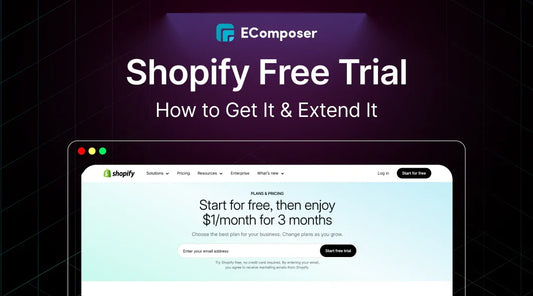
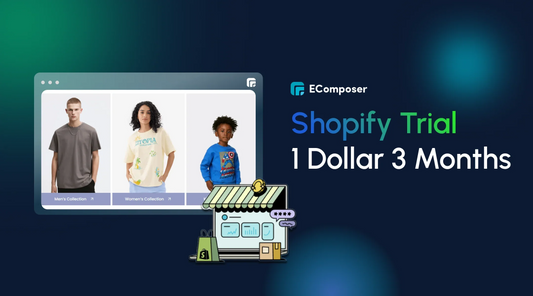
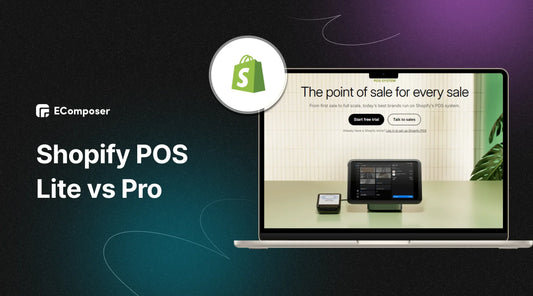
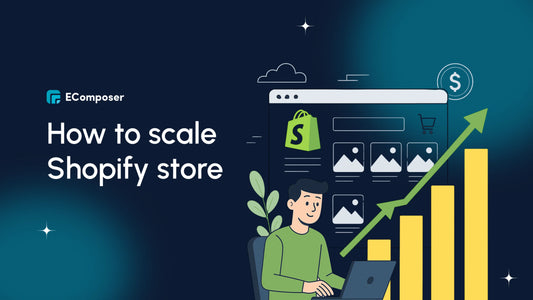









0 comments